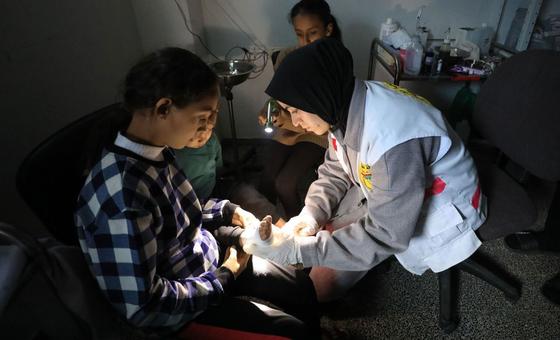
Locations in the north and south of the enclave were hit as Israeli ground forces also reportedly pushed into central areas, along with the firing of rockets by Palestinian armed groups into Israel, prompting concerns from the UN agency for Palestinian refugees, UNRWA, about the safety of civilians uprooted time and again.
Rafah governorate in the southern Gaza Strip is now “bursting at the seams”, Director of UNRWA Affairs in Gaza Tom White said on X – formerly Twitter – late on Tuesday, his video post showing a long line of cars crawling forwards tail to bumper, laden with mattresses strapped down and other belongings.
Roads smashed
İçerik Tablosu
In its latest update on the crisis, UN aid coordination office OCHA said that Israeli forces had reportedly carried out “heavy” bombardment from air, land and sea “across most of the Gaza Strip, specifically the Middle Area” from 23 to 26 December.
This included “more than 50 strikes” from 24 to 25 December on three refugee camps – Al Bureij, An Nuseirat and Al Maghazi – that reportedly killed dozens and hindered the work of aid teams confronted by destroyed roads connecting the camps.
It has been more than 80 days since Israeli Defense Forces’ bombardment of the Strip began, in response to Hamas-led terror attacks in southern Israel, in which roughly 1,200 people were massacred and approximately 240 others were taken hostage.
The enclave’s health authority has reported that at least 20,915 Palestinians have been killed there since 7 October – including 858 people between last Saturday and Tuesday. “About 70 per cent of those killed are said to be women and children…Many people are missing, presumably buried under the rubble, with many still waiting for rescue or recovery.”
OCHA also reported that 164 Israeli soldiers have died with another 874 injured during ground operations in Gaza.
Renewed health fears
The development followed a new evacuation order issued by the Israeli Defense Forces impacting people living in Gaza’s middle area. At the same time, UNRWA Director of Communications Juliette Touma issued a fresh warning about the dire situation impacting people sheltering in tented camps in the south.
“You have 400 people sharing one toilet,” Ms. Touma said, echoing repeated concerns about disease spread linked to the lack of basic necessities including water, sanitation and food.
UN humanitarians have already described how hungry Gazans have stopped aid trucks en route to their destination to offload food, amid repeated warnings that it is becoming impossible to meet the needs of all those in the south, where population density is estimated at 12,000 people per square kilometre (about 7.5 miles).


